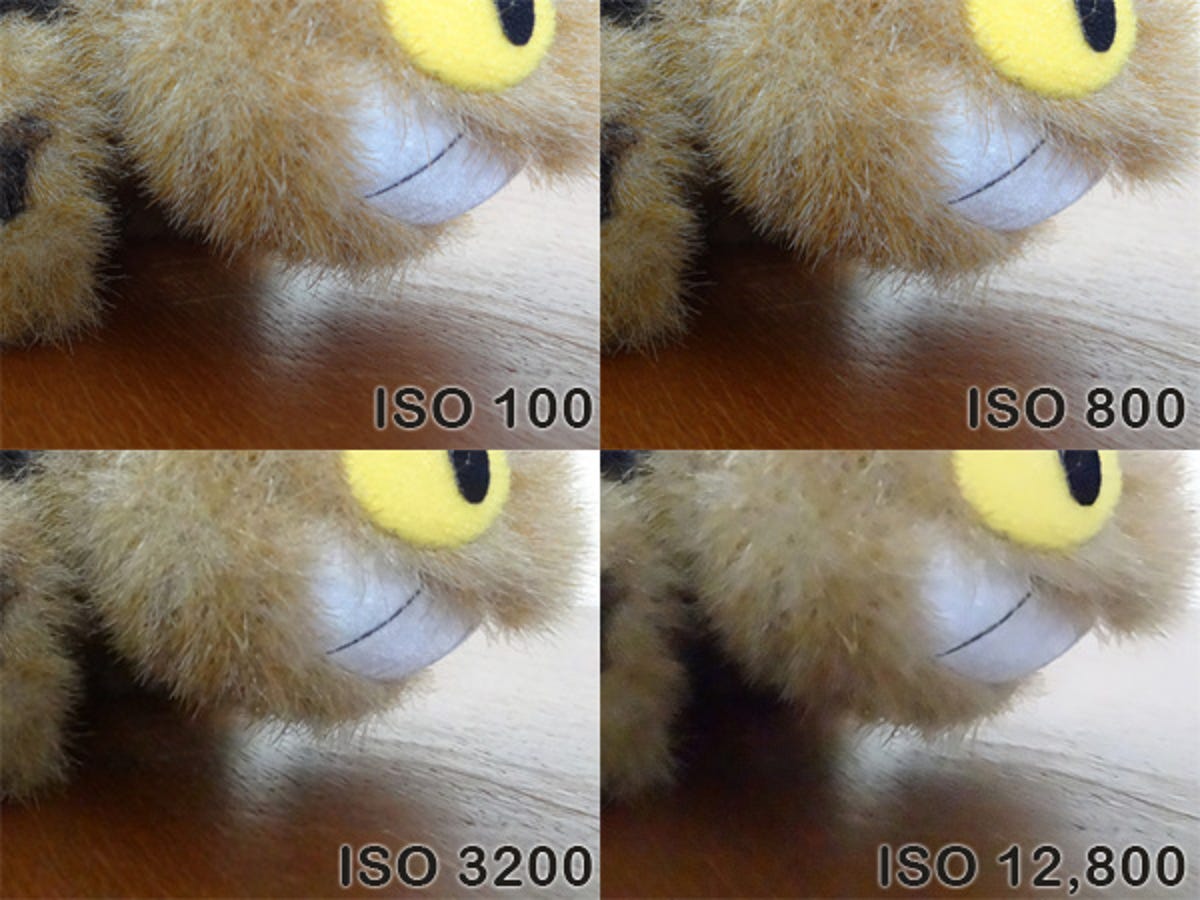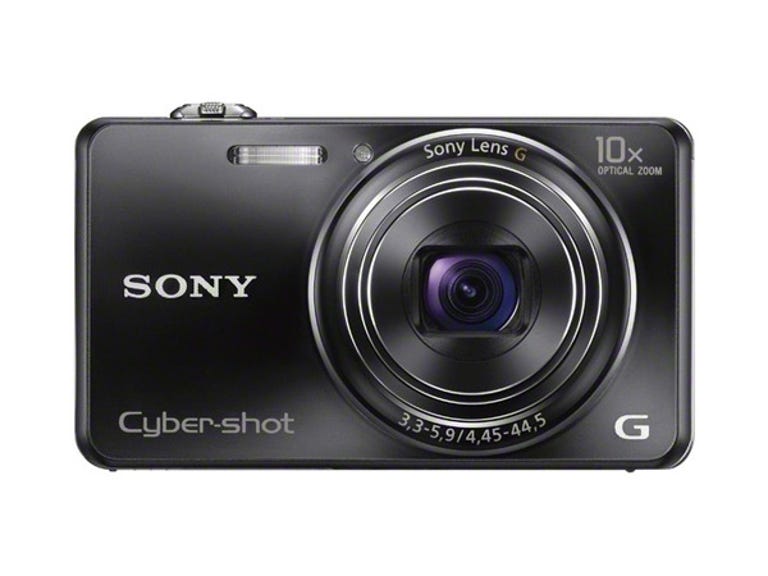 Why You Can Trust CNET
Why You Can Trust CNET Sony Cyber-shot DSC-WX100 review: Sony Cyber-shot DSC-WX100
If you're looking for a small, lightweight camera with good low-light performance, the Sony Cyber-shot DSC-WX100 is a good choice; just don't zoom all the way in on the photos.
Sony claims that its Cyber-shot DSC-WX100 is the world's lightest and smallest camera, if you care to discount the lens barrel. Though there might be some quibbles about the claim, the WX100 is a little camera that can.
The Good
The Bad
The Bottom Line
Design and features
Available in two colours (silver or black), this Cyber-shot's petite dimensions (17.5mm at its thinnest) and scarcity of weight (124g with battery and memory card on-board) aren't achieved by shedding features. Out the front, there's a G-series 10x optical zoom lens feeding to a 18.2-megapixel backlit CMOS sensor. At its widest, it's the equivalent of a 25mm lens in a 35mm world.
Under one of its protective doors there's a mini-HDMI port (cable not included, unfortunately), while at the bottom, another door hides the cavity for a lithium-ion battery pack and a slot for either an SD/SDHC/SDXC or MemoryStick card. There's also 19MB of usable internal storage (that's around three images at maximum resolution), if you happen to be particularly forgetful and in a bind. A proprietary port is located on the bottom to provide both charging and data connectivity (these cables are included). There's also a tripod mounting point on the bottom, but it isn't lined with the centre of the lens barrel.
At the back, the layout is pretty standard Sony compact camera fare. There's a 2.7-inch 460,000 pixel LCD display taking up most of the real estate, with a set of controls to the right. At the top of the control stack is a slider to flick between camera, iSweep Panorama and movie modes — the latter is almost redundant, as the movie recording button next to it works in all shooting modes and, unlike older Cyber-shots, doesn't need to be held down for film recording.
Below that is a dial that doubles as a multi-way selector, which will let you cycle through the various shooting modes, as well as letting the user set a tracking focus point, switch continuous shooting on or off and set the flash and self-timer settings. The latter includes face detection modes for both one or two heads, which is handy for those who struggle to hold, aim and click a camera with one outstretched arm.
All up, there are 25 user selectable picture and shooting modes, but certain modes, such as macro, are only available at the camera's discretion in either Intelligent Auto or Superior Auto. That gripe aside, Superior Auto actually does a good job of picking the appropriate style or mode for the conditions, especially in low-light situations, when it often chooses to do a merge of multiple burst shots to produce one image with improved exposure and less shake-induced blur.
A Menu button on the bottom right grants access to most of the camera's common settings and manual controls. Most of the latter are reserved for Program Auto mode, with user tweak-able controls for exposure compensation adjustment (up to 2 stops), ISO selection (Auto, 100 through to 12,800), white balance (including manual white balance), auto focus (multi, centre and spot), metering (multi, centre and spot), continuous shooting interval (2 or 10 frames per second), auto smile shutter and smile detection sensitivity.
Performance
General shooting metrics (in seconds)
- Start-up to first shot
- JPEG shot-to-shot time
- Shutter lag
- 21.40.4Sony Cyber-shot WX100
(Shorter bars indicate better performance)
Continuous shooting speed (in frames per second)
- 7.3Sony Cyber-shot WX100
(Longer bars indicate better performance)
In high-speed burst mode, the WX100 is able to capture 10 photos at a claimed 10 frames per second. Unfortunately, we fell a little shot of that mark, but the unit's capture speed is impressive, nonetheless.
According to Sony, the WX100's lithium-ion battery should be good for at least 240 shots, 180 minutes of image viewing or shooting 60 minutes of video. During our tests, the camera survived for two and a half days of fairly intense use before its battery light began to flash in panic.
Image quality
When the WX100's photos are shrunk down for viewing on a laptop, TV, tablet or smartphone — or even printed out in regular size 6x4-inch prints — they're good, really good. As we've mentioned before, leaving the camera in one of the auto modes usually leads to it choosing the appropriate settings for the conditions. The details are sharp and colours punchy, without being oversaturated; although in certain lighting conditions, the WX100 tends capture things a bit too warm for our liking, but that's a minor gripe for pedants like ourselves.
If you need to zoom in to 100 per cent and crop a photo, however, you'll be slightly disappointed, as the WX100 seems to compose its images from a mosaic of irregularly shaped blobs. This isn't fantastic if you need to extract detail, but it does mean that the WX100's photos are never grainy, even in low light or at high sensitivities.

Click for a larger ISO comparison.
(Credit: CBSi)
The camera can manage up to ISO 12,800, but using the WX100 at sensitivities 3200 and beyond, results in a noticeable drop off in detail, even when the image is scaled down for computer or tablet viewing. At ISO 12,800 and 6400, photos have a rather artistic feel to them, as areas of high detail are rendered in large digital brush strokes. Similarly, in low light, if the camera merges multiple burst shots together in Superior Auto mode, faces and details are smoothed out, so much so that you'd swear that the photo editor at Vogue was living inside the Cyber-shot.
A sample image from the WX100 with 100 per cent crop inset.
(Credit: CBSi)
1080i video can be recorded on the WX100 in AVCHD format, and given the camera's price and size, it does a good job. To mitigate against the shaky cam effect, the WX100 uses both optical and digital image stabilisation, although at maximum zoom, neither really seem to help much. Optical zoom is available during recording, and is neatly slowed down both for artistic merit and to ensure that the zoom mechanism's whirrs aren't found on the audio track. The only major complaint we have in movie mode is the microphone's fondness for wind noise and sensitivity to hand movements.
Image samples
Exposure: 1/200, f/3.3, ISO 100 | Exposure: 1/30, f/3.3, ISO 320 |
Exposure: 1/30, f/3.3, ISO 320 | Exposure: 1/125, f/3.3, ISO 100 |
(Credit: CBSi)
Conclusion
If you're looking for a small, lightweight camera with good low-light performance, the Sony Cyber-shot DSC-WX100 is a good choice; just don't zoom all the way in on the photos.


